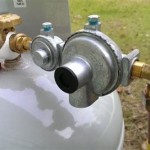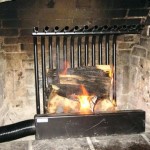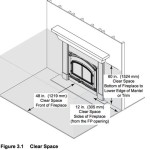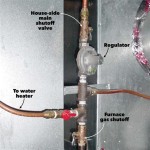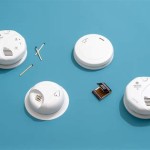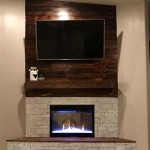Highest BTU Gas Fireplaces: A Comprehensive Guide
Gas fireplaces offer a convenient and efficient alternative to traditional wood-burning fireplaces. They provide instant heat, eliminate the need for firewood, and often come with features like remote controls and adjustable flame heights. When selecting a gas fireplace, one of the most significant factors to consider is its British Thermal Unit (BTU) rating. A fireplace with a higher BTU rating can generate more heat, making it suitable for larger spaces or individuals who prefer a warmer environment. This article provides a detailed overview of high BTU gas fireplaces, their benefits, considerations for selection, and factors influencing overall heating performance.
Understanding BTU and Its Significance
BTU, or British Thermal Unit, is a standard unit of measurement for heat energy. Specifically, one BTU is the amount of energy required to raise the temperature of one pound of water by one degree Fahrenheit. In the context of gas fireplaces, the BTU rating indicates the amount of heat the fireplace can produce per hour. A higher BTU rating generally translates to a greater heating capacity.
The BTU rating of a gas fireplace is a crucial factor in determining its suitability for a particular space. Selecting a fireplace with an appropriate BTU rating ensures that the room can be heated efficiently and effectively. An undersized fireplace may struggle to heat the room adequately, while an oversized fireplace can lead to overheating and potentially higher energy costs. Therefore, understanding the relationship between BTU and the size of the space is paramount.
Manufacturers typically specify the BTU range for their gas fireplaces, allowing consumers to compare different models. This rating should be considered in conjunction with other factors such as the fireplace's efficiency rating and the insulation level of the room being heated. A higher BTU rating does not automatically guarantee superior heating performance; it is essential to consider the overall efficiency of the fireplace.
Benefits of High BTU Gas Fireplaces
High BTU gas fireplaces offer several advantages over lower BTU models, particularly in larger or less insulated spaces. One of the primary benefits is their ability to provide substantial heat output quickly. This rapid heating capability is particularly advantageous during colder months or in climates with fluctuating temperatures.
For homes with open floor plans or large living areas, a high BTU gas fireplace can effectively heat the entire space, creating a comfortable and inviting atmosphere. This is in contrast to lower BTU fireplaces, which may only provide localized heating, leaving other areas of the room feeling cold.
Furthermore, high BTU gas fireplaces can serve as a viable alternative to central heating systems in certain situations. By strategically placing a high-output fireplace in a frequently used area, homeowners can reduce their reliance on central heating, potentially lowering energy bills. This localized heating approach can be particularly effective in households where only certain rooms are occupied for extended periods.
In addition to their heating capabilities, high BTU gas fireplaces often feature advanced control systems, allowing users to precisely regulate the heat output and flame intensity. This level of control enhances user comfort and enables efficient energy consumption. Some models also incorporate programmable thermostats and remote control functionality, providing added convenience.
Many modern high BTU gas fireplaces are designed with aesthetic appeal in mind, featuring realistic flame patterns and decorative log sets. These fireplaces can serve as a focal point in a room, adding ambiance and visual interest while providing practical heating benefits. The ability to customize the appearance of the fireplace further enhances its appeal, allowing homeowners to integrate it seamlessly into their existing decor.
Factors to Consider When Selecting a High BTU Gas Fireplace
Numerous factors should be considered when selecting a high BTU gas fireplace to ensure optimal performance and satisfaction. One of the most critical considerations is the size of the space to be heated. Calculating the square footage of the room and considering its insulation level is essential in determining the appropriate BTU rating. As a general guideline, a fireplace with a BTU rating of 30,000 to 40,000 may be suitable for heating a 1,000-square-foot space, but this can vary depending on factors such as ceiling height and insulation.
The type of gas used by the fireplace is another important consideration. Gas fireplaces typically operate on either natural gas or propane. Natural gas is generally more cost-effective, while propane offers greater portability and can be used in areas where natural gas lines are not available. It is crucial to select a fireplace that is compatible with the gas supply available in the home.
The venting system is another critical aspect to consider. Gas fireplaces can be either direct vent, ventless, or B-vent. Direct vent fireplaces draw combustion air from outside and exhaust fumes directly outside, offering enhanced safety and efficiency. Ventless fireplaces do not require venting, but they must be used in well-ventilated areas and may not be suitable for individuals with respiratory sensitivities. B-vent fireplaces vent through a traditional chimney and are often used as replacements for older wood-burning fireplaces. The choice of venting system will depend on the existing infrastructure and the specific requirements of the installation.
The energy efficiency of the fireplace is a significant factor in determining its long-term operating costs. Look for models with high efficiency ratings, as these will consume less gas while providing comparable heat output. Energy-efficient fireplaces often incorporate features such as sealed combustion chambers and electronic ignition systems.
Safety features are paramount when selecting a gas fireplace. Look for models with safety features such as flame failure sensors, which automatically shut off the gas supply if the flame is extinguished. Child safety screens are also essential to prevent accidental burns. It is also vital to ensure that the fireplace is installed and maintained by a qualified professional to ensure safe operation.
The cost of the fireplace, including installation costs, should be considered in relation to its features and performance capabilities. High BTU gas fireplaces can vary significantly in price, depending on factors such as brand, features, and design. It is essential to weigh the initial investment against the long-term benefits, such as energy savings and increased home value.
Factors Influencing Heating Performance
While the BTU rating of a gas fireplace provides a general indication of its heating capacity, several other factors can influence its actual heating performance. The insulation level of the room being heated is a significant factor. A well-insulated room will retain heat more effectively, allowing the fireplace to heat the space more efficiently. Conversely, a poorly insulated room will lose heat more rapidly, requiring the fireplace to work harder to maintain a comfortable temperature.
The size and layout of the room also play a role in heating performance. Open floor plans can make it challenging to heat the entire space evenly, as heat tends to dissipate. Conversely, smaller, enclosed rooms are easier to heat effectively. The placement of the fireplace within the room can also affect its heating performance. Placing the fireplace in a central location can help to distribute heat more evenly throughout the space.
The type of fuel used by the fireplace can also influence its heating performance. Propane typically has a higher BTU content than natural gas, meaning that a propane fireplace may produce slightly more heat than a natural gas fireplace with the same BTU rating. However, the overall cost of propane versus natural gas should be factored into the decision-making process.
The maintenance of the fireplace is also crucial for optimal heating performance. Regular cleaning and inspection of the fireplace can help to ensure that it is operating efficiently and safely. Accumulated dust and debris can reduce the efficiency of the fireplace and potentially pose a safety hazard. It is recommended to have the fireplace professionally serviced annually to ensure that all components are functioning correctly.
The altitude at which the fireplace is used can also affect its heating performance. At higher altitudes, the air is thinner, which can reduce the efficiency of combustion. Some gas fireplaces are designed with altitude adjustments to compensate for this effect. It is essential to consult the manufacturer's recommendations for altitude adjustments to ensure optimal performance.
Installation and Maintenance
Proper installation is critical for ensuring the safe and efficient operation of a high BTU gas fireplace. It is strongly recommended to hire a qualified professional to install the fireplace, as this will ensure that all connections are made correctly and that the venting system is properly installed. Attempting to install a gas fireplace without the necessary expertise can be dangerous and may void the warranty.
During the installation process, the installer should verify that the gas supply is adequate for the fireplace's BTU rating. Insufficient gas supply can result in poor flame quality and reduced heating performance. The installer should also ensure that the venting system meets all applicable codes and regulations. Improper venting can lead to carbon monoxide buildup, which is a serious health hazard.
Regular maintenance is essential for prolonging the lifespan of the gas fireplace and ensuring its continued safe operation. At a minimum, the fireplace should be inspected annually by a qualified technician. The technician should clean the burner assembly, inspect the venting system, and check for any leaks or damage. It is also recommended to clean the glass front of the fireplace regularly to maintain a clear view of the flames.
Homeowners should also be aware of the signs of potential problems with their gas fireplace. These include unusual odors, flickering flames, and excessive soot buildup. If any of these symptoms are observed, it is important to turn off the fireplace immediately and contact a qualified technician for assistance.
.aspx?strip=all)
Hottest Fireplaces Btu Output Style Regency
.aspx?strip=all)
Hottest Fireplaces Btu Output Style Regency
.aspx?strip=all)
Hottest Fireplaces Btu Output Style Regency
.aspx?strip=all)
Hottest Fireplaces Btu Output Style Regency

Elevation 36 Direct Vent Fireplace Propane Electronic Ignition
.aspx?strip=all)
Hottest Fireplaces Btu Output Style Regency

Traditional Premium Gas Fireplaces Made In America Fireplace Xtrordinair

Enviro S Gas C44 Linear Fireplace

Napoleon Ascent 46 Gas Direct Vent Fireplace B46 Hvacdirect Com

Enviro S Series Freestanding Gas Or Propane Fireplace Fireplaces By Cameron

